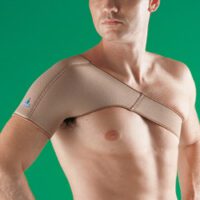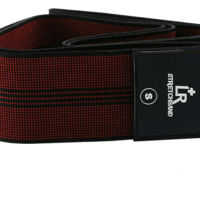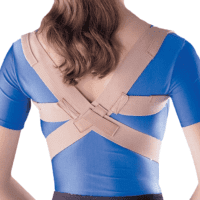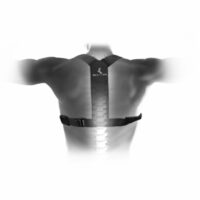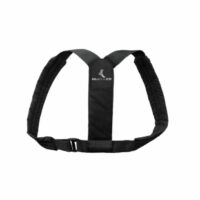Shoulder Dislocation
Article by John Miller

Managing Shoulder Dislocation and Subluxation
What is a Shoulder Dislocation?
Shoulder dislocations happen when an external force completely ejects the arm from its socket, leading to what is known as a dislocated shoulder. This injury can cause intense pain and render the arm immobile until the shoulder is realigned in the socket.
The Difference Between Dislocation and Subluxation
Shoulder dislocations occur when an external force wrenches the arm from its socket, resulting in a dislocated shoulder. This injury often causes intense pain and incapacitates the arm until it is correctly repositioned. When we talk about a shoulder dislocation, we’re referring to the complete removal of the arm bone from the shoulder socket.
In contrast, a shoulder subluxation is a less severe form of joint distruption. Here, the arm bone partially exits the joint but then snaps back into place. While it may not be as severe as a full dislocation, subluxation still requires medical attention.
What Causes a Dislocated Shoulder?
Trauma, such as a fall or a direct blow to the shoulder, often leads to a dislocated shoulder. However, inherent instability within the shoulder joint can also be a culprit. The shoulder is famed for its range of motion, the most extensive in the body, which unfortunately makes it vulnerable to dislocation.
Classifying Shoulder Dislocation
There are several types of dislocated shoulders, with anterior shoulder dislocation being the most prevalent. This type often results from an arm being rotated or lifted forcefully, as seen in sports like rugby or from an awkward fall.
Posterior shoulder dislocation is rarer and typically occurs from an arm being forced backward, as might happen during a seizure or a car accident.
Multi-Directional Instability (MDI) is another type, often due to ligament laxity and can be either inherited or due to repetitive stress from activities like swimming or cricket.
Shoulder Dislocation Symptoms

The symptoms of a dislocated shoulder are unmistakable. Individuals report a “popping out” sensation or a visible deformity of the shoulder. In the case of subluxation, the shoulder might feel as if it’s shifting or briefly popping out of joint. Common signs include:
- Pain in the shoulder
- The shoulder appearing out of place or visibly deformed
- Recurrent instances of the shoulder ‘giving way’
- A persistent feeling of the shoulder being loose or unstable
- Numbness or weakness in the arm
Diagnosing Shoulder Dislocations
Diagnosing a dislocated shoulder involves a thorough discussion of symptoms and injury history, followed by a physical examination. Healthcare professionals may also request imaging tests, such as X-rays, MRIs, or MRAs, to confirm the diagnosis and identify any concurrent issues, such as fractures or ligament tears.
Bankart Lesion & Hills-Sach Fractures
When a shoulder dislocates, it can stretch or tear the capsular ligaments, leading to a Bankart lesion, which involves a tear in the shoulder’s labrum. A Hills-Sach fracture, another possible injury, is a depression fracture in the humeral head caused by impact with the rim of the shoulder socket.
Dislocated Shoulder Treatment
Treatment for shoulder instability is multi-phased, beginning with joint reduction to ensure the nerves and blood supply to the shoulder are intact. Pain relief and joint protection follow, often using a sling. As the healing process advances, restoring muscle control and joint motion becomes the focus. A graded return to sport and function is the final goal, with ongoing strength and control exercises to forestall future dislocations.
Without surgery, especially in younger individuals, the likelihood of a shoulder dislocation recurring is high. As high as 95%! Post-surgery, most patients return to their sport after several months. With non-operative treatments, a return could be possible within 3-4 weeks, albeit with a higher recurrence risk.
Shoulder Stabilisation Surgery
Surgical stabilisation is sometimes necessary after a dislocation to repair damaged ligaments, the glenoid labrum and to prevent future dislocations. Surgery can significantly reduce the risk of recurrence, with success influenced by factors like age, activity level, and sports participation.
Post-Shoulder Stabilisation Surgery Physiotherapy Rehabilitation
Following shoulder stabilisation surgery, physiotherapy plays a pivotal role in ensuring a successful recovery. The rehabilitation process typically begins with the patient in a sling for several weeks. In the initial stages, the focus is on protecting the surgical repair and managing pain.
As healing progresses, exercises gradually become more advanced, aiming to strengthen the shoulder muscles, particularly the rotator cuff and scapular stabilisers. This helps in regaining full shoulder function and mobility.
Physiotherapists also provide guidance on proper posture and shoulder mechanics to prevent future injuries. It’s vital to follow a tailored exercise program and adhere to the physiotherapist’s advice for optimal recovery and to reduce the risk of re-injury. Regular follow-up appointments are crucial to monitor progress and adjust the rehabilitation plan as needed.
Most post-stabilisation rehabilitation sees a return to most activities at approximately 6 months, but time frames vary significantly, so please be guided by your surgeon and physiotherapist.
Conclusion
In conclusion, whether it’s a complete dislocation or a subluxation, a shoulder injury demands prompt and effective management. Surgical and non-surgical treatments are both viable paths to recovery, depending on the individual case. Tailored physiotherapy programs play a crucial role in rehabilitation and in reducing the risk of re-injury.
Our physiotherapy team is well-equipped with the knowledge to guide patients through their recovery journey, ensuring the best possible outcome and a safe return to daily activities or sports. If you’re grappling with a dislocated shoulder or shoulder subluxation, book an appointment with PhysioWorks for professional assessment and treatment is the first step towards regaining full shoulder function and stability.
Rochedale - Call 38410277
Book Online: RochedaleSalisbury - Call 32751044
Book Online: SalisburySandgate - Call 32691122
Book Online: SandgateRelated Articles
- Functional Shoulder Instability: This piece focuses on chronic instability in the shoulder, a condition that often leads to recurrent subluxations and dislocations.
- Physiotherapy for Shoulder Pain: This article offers a comprehensive overview of various shoulder conditions and how physiotherapy can help in their management. It’s highly relevant for readers seeking broader knowledge on shoulder health.
- Broken Shoulder: Here, you can learn about the implications of a broken shoulder and related conditions like shoulder arthritis and adhesive capsulitis. It’s useful for readers wanting to understand more about serious shoulder injuries and their treatments.
- Post-Operative Shoulder Rehabilitation: Essential reading for anyone undergoing shoulder surgery, this article outlines the rehabilitation process, offering insights into recovery exercises and therapies.
- AC Joint Injury: This article discusses injuries to the acromioclavicular joint, a common issue for athletes and those who have suffered falls. It adds another dimension to the understanding of shoulder injuries.
- Shoulder Arthritis: Discussing degenerative joint disease in the shoulder, this article is useful for those interested in chronic shoulder conditions.
- Rotator Cuff Tear: This article will discuss rotator cuff tears, which involve damage to the rotator cuff muscles, a common issue resulting from injury or wear over time. It’s a crucial read for anyone interested in understanding one of the most common causes of shoulder pain and dysfunction, especially relevant for those who have experienced a shoulder dislocation or subluxation, as these conditions can impact the rotator cuff.
















